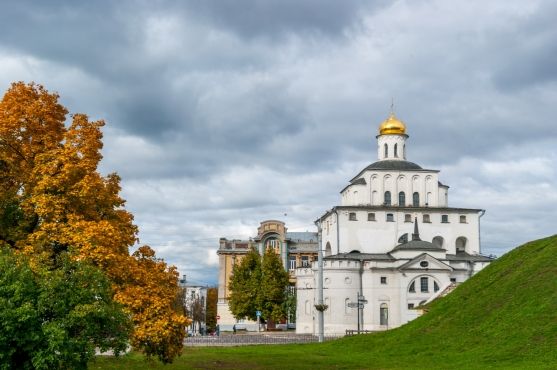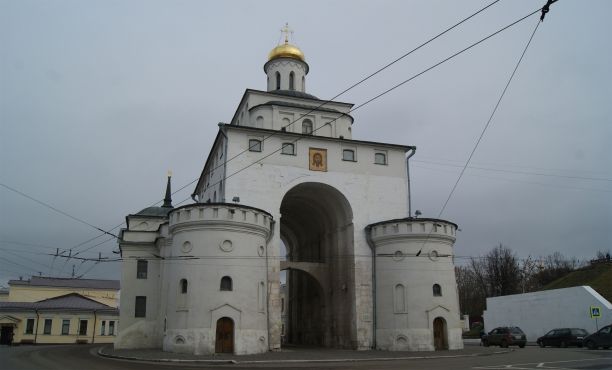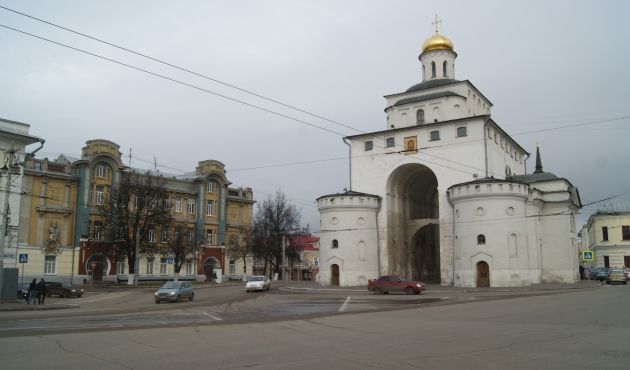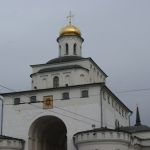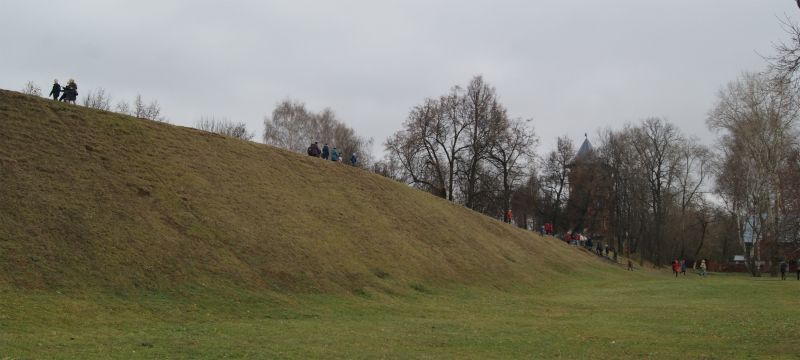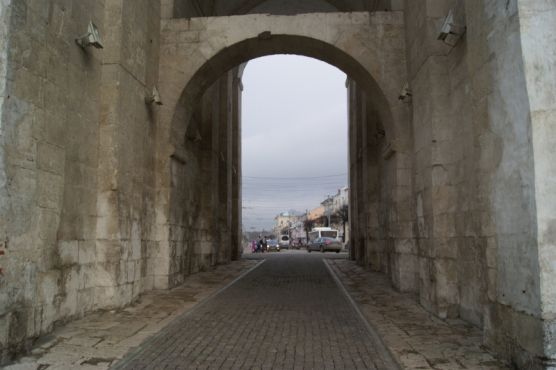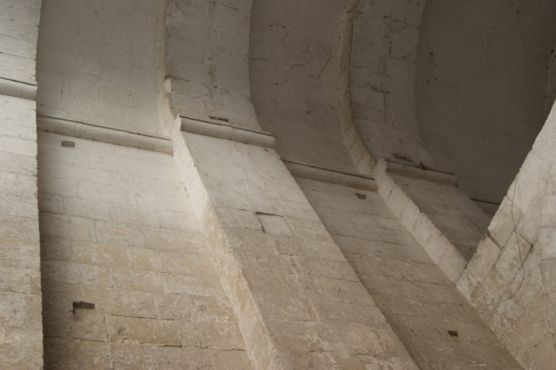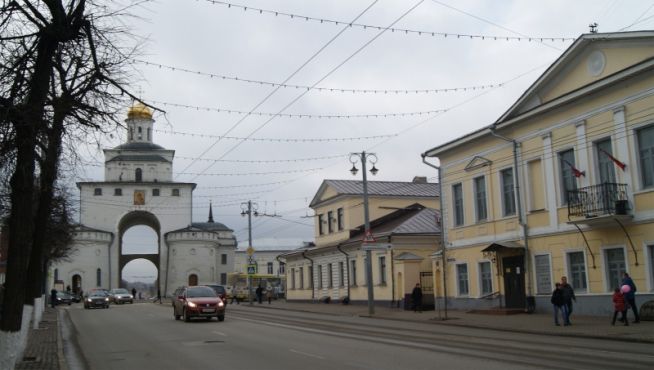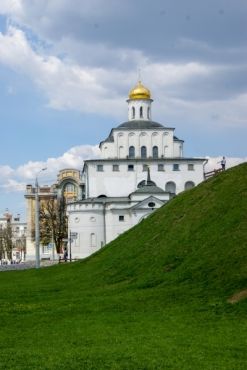Golden Gate
The Golden Gate is the rarest monument of Russian military-defense architecture of the 12th century. The uniqueness of the building is that only the Vladimir Golden Gate has survived to our days, albeit with great restructuring, although in the Middle Ages there were similar gates in Kiev, Jerusalem and Constantinople. Golden Gate opened Vladimir from the west, from the outside through them there was a road inside the city. And its direction has practically not changed in 800 years!
Grand Duke Andrey Bogolyubsky, declaring Vladimir the capital of the rich Rostov-Suzdal principality, began to strengthen his capital city. He encircled it with ramparts (9 m high, 24 m wide) and an outer moat (more than 8 m deep and 22 m wide). Five entrance gates were built in the fortress ring: in the west – the Golden Gate, in the east – the Silver Gate, in the south – the Volga Gate, in the north – the Copper Gate and the Orina’s (Irina’s) Gate. Until now, only the Golden Gate has escaped, serving as a grand entrance to the richest princely-boyar part of the city. The oak gates, which are not present at the moment, were bound with sheets of gilded copper, brightly shining in the sun, so the gates were called Golden.
The time for laying the Golden Gate was 1158, and the construction was completed in 1164. The gates were built by the Vladimir masters, belonging to the composition of princely people, as evidenced by the princely sign on one of the white stone blocks. The demonstrative nature of the construction was manifested in the Vladimir Golden Gate: Andrey Bogolyubsky strove with all means to prove the equality of his new capital with the "mother of Russian cities" Kiev and even with Constantinople himself. The white stone triumphal arch, reaching a height of 14 meters, a grandiose travel tower and massive "golden" gates gave the building a majestic appearance.
There is a legend that when the works came to an end, loops that did not have time to harden in the masonry escaped, and the oak planks buried under them 12 people who came to see the beauty of the gate. None of the eyewitnesses doubted that people were crushed to death, but Andrey Bogolyubsky ordered to bring the miraculous icon of the Mother of God and turned to the heavenly patron with a prayer for the unfortunate. The blockage was cleared and the people lying under it were found alive and unharmed. In honor of the miracle that happened, Andrey Bogolyubsky ordered to build a tiny white-stone chapel over the Golden Gate – of the Position of the Mother of God Vestments.
The gates adjoined to the arched bridge, on top of which was arranged a wooden flooring, serving as a combat platform. With it, the soldiers could fire at the enemy, lower the stones and pour boiling water on the heads of the enemies besieging the city. From the flooring there are only large square nests in the masonry of walls, designed for powerful wooden beams. The climb to the battlefield was carried out on a stone staircase, arranged in the thickness of the southern wall. On the jambs of the staircase there are inscriptions scratched on the stone and images of crosses from the 12th-13th centuries. In the menacing days of the siege of Vladimir by the troops of Khan Baty in 1238, the breakthrough of the main city gate was impossible, and the enemies carried out a breach of the city wall to the south of the gate with the help of wall-breaking machines. After that, the city was taken and subjected to looting and arson. The gilded plates from the gate disappeared irrevocably. Their location is still a mystery. Today this event – the storming of Vladimir on February 7, 1238 – is reconstructed in detail by a large diorama located in the walls of the gate church, accompanied by a light-musical effect and a voice of the announcer.
The Golden Gate and the gate church itself also suffered brutally from the Tatar-Mongol devastation in the 13th century, during the formidable military events of the Time of Troubles in the beginning of the 17th century, during the fire of 1778. In connection with the repeated forced rearrangements, today only foundation is preserved from the ancient building of 1164 – two powerful white-stone walls. At the end of the 18th century, the earth shafts, which had lost their defensive importance, were razed. Adjoining the Golden Gate from the north and south, they previously provided for the powerful support of the building. So to the corners of the building, buttresses were added, hidden by round towers, between which the living quarters were built from the north, and from the south – a new staircase to the church. In this form, the monument has reached our days.
As for the historical shaft, it was called after the merchant A.F. Kozlov, who purchased there a plot of land with a garden at the beginning of the 18th century. The height of the preserved Kozlov shaft – 6 m – is two-thirds of the original. Kozlov shaft as a remnant of an ancient fortress is now a historical monument.
Military-historical exposition is located in the Golden Gate today. The central place in it is occupied by the aforementioned diorama "Decisive assault of Vladimir by the troops of Khan Baty on February 7, 1238". The exposition also includes weapons and military uniforms from various epochs, historical materials on outstanding military leaders (D. Pozharsky, A. Suvorov, P. Bagration, N. Stoletov), whose names are associated with the Vladimir region. In the gallery of Heroes of the Soviet Union, which is located on the site of an ancient open gallery around the church, today there are interesting documents and testimonies about the exploits of the heroes of Vladimir during the pre-war period, during the Great Patriotic War and after it.
The Golden Gate together with other white-stone monuments of the Vladimir-Suzdal architecture of the 12th-13th centuries was included in the UNESCO World Heritage List in 1992.
Today the Golden Gate is an island of history in the very center of Vladimir, surrounded by a stream of cars. The newlyweds, residents and guests of the city consider it a happy sign to pass under the arch of the Golden Gate and make a wish.
 Tourism portal of the
Tourism portal of the

